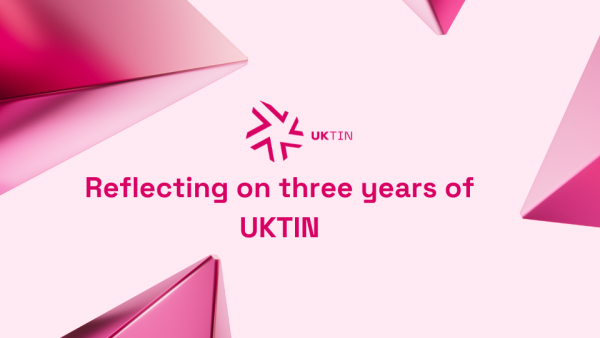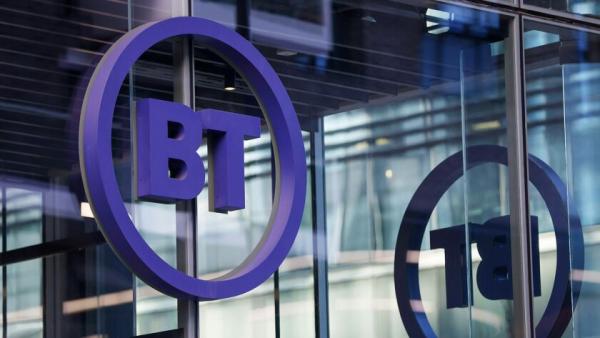An investment package worth almost £150 million was unveiled recently by the Department of Science, Innovation & Technology (DSIT), with up to £100 million to put the UK at the forefront of research and £40 million to boost 5G tech adoption. UKTIN spoke to Kate Greenham, Head of Programmes for Wireless Infrastructure, DSIT.

1. Please tell us about DSIT’s plans for 5G adoption.
DSIT recently published the Wireless Infrastructure Strategy. The Strategy set out our new ambition to deliver nationwide coverage of standalone 5G to all populated areas by 2030. We also want people, businesses and public services across the UK to realise the full benefits of 5G. Our wider programme of driving 5G adoption will showcase how 5G and other advanced wireless technologies can support technology application and innovation in key sectors like public services, rural industries and advanced manufacturing. We see 5G as a foundation for enabling wider technological ambitions.
The UK Government has set out a levelling-up initiative and, as a part of that, we want places and communities across the country to be able to experience the benefits of digital connectivity. Improved connectivity will improve lives and drive growth. . 5G technology is estimated to bring up to £159 billion in productivity benefits by 2035 if adopted widely.
2. DSIT's Future Networks Programme is focused on diversifying the telecoms supply chain. How does 5G adoption sit alongside that?
Supply chain diversification is about improving the security and resilience of the networks, and in doing so enabling greater choice of products and services. I worked on the diversification side of the Future Networks Programme and set up the Future Radio Access Network Competition (FRANC), before jumping over to the Design and Development Team to launch the Future Open Networks Research Challenge (FONRC) and Republic of Korea (RoK) competitions.
5G adoption is complementary to that work and aims to drive investment in secure networks by stimulating demand. Our 5G adoption work for instance will support the deployment of private networks, which are a good proving ground for interoperability. Diversifying the telecoms supply chain will, hopefully, drive innovation and growth across the economy. Then, essentially, the products that are brought through diversification should translate into the adoption arena, ensuring communities and businesses experience the benefits.
It is also important to point out that DSIT has created the Open Networks Ecosystem (ONE) competition. There has been a lot of interest from local authorities as well as industry, particularly in terms of addressing High Density Demand (HDD), the ability to provide decent mobile coverage in crowded areas.
3. The Smart Infrastructure Pilots Programme (SIPP) is a continuation of the Digital Connectivity Infrastructure Accelerator (DCIA) competition. Please can you tell us what the key outputs and learnings were from DCIA and how they fed into SIPP?
DCIA phase one was focused on accelerating the deployment of digital infrastructure by improving the ability to access and apply sites. The outcome was a digital mapping platform, which will be continuing into this second phase, hopefully evolving and maturing. The next step was around building evidence to understand the benefits and feasibility of using street furniture. There has been a lot of engagement with the industry, but standards have not been created yet.
SIPP is a very specific build on the work done under the 5G Testbeds and Trials (5GTT) banner, but also feeds into our wider strategy of encouraging investment in wireless networks. Publicly Available Specification (PAS) 191 was created by BSI in DCIA phase one, and we are now looking to test and trial the standards in a pilot programme across the UK. We aim to find up to six local authority areas in which to deploy smart lampposts and columns that adhere to this specification. Hopefully, this will give us a better understanding of the practical application of the standards and the associated technical commercial model. So, yes, it is very much the next stage of the DCIA project.
5. DSIT has pre-announced 5G Innovation Regions. Please can you tell us more about this?
Yes, 5G Innovation Regions is an intervention as part of the Wireless Infrastructure Strategy through which £40 million will be utilised to enable places across the UK to unlock opportunities across the digital economy (e.g. transport, and health and social care) utilising advanced wireless connectivity. We are taking a flexible regional approach where the programme focuses on existing local needs and strengths. We want to listen to regions and focus on what they need, ultimately promoting the adoption of 5G and creating productivity, growth and awareness. We’ve received a lot of responses already through our pre-competition consultation and will now be taking a look at feedback, refining the programme before its launch.
We’ve also announced another new programme; a £7m fund to help rural communities to support deployment of digital infrastructure in rural and very hard to reach areas and to help farmers in the trial areas to make the most of new agricultural technologies by improving connectivity on their land.
6. How does this sit alongside SIPP? Do you anticipate any crossover in terms of authorities applying?
They are complementary. There will be some areas that will be bidding for both projects. It depends on the local authority and their overall digital strategy, as well as previous experience. The ONE Competition, and HDD in particular, is also complementary.
All of this work goes hand-in-hand. I think DSIT has come a long way since the 5GTT Programme and we’re now moving towards a better understanding that 5G has a wide range of benefits, both social and economic, but there is still a lot to be done which we aim to progress with these programmes.









